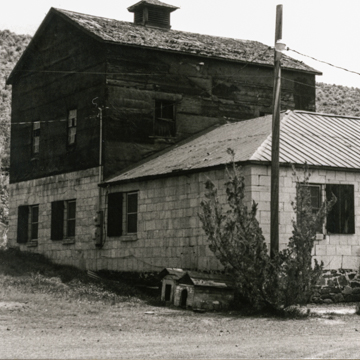This was the site of the first flour mill in Humboldt County and one of the earliest in Nevada. Following its construction, farmers in the surrounding area began to grow wheat, which could finally be processed locally; previously flour had been shipped from California. Charles Adams, the first owner of the mill, sold the property to Battiste Recanzone, an Italian immigrant, in the early 1880s. Recanzone's son Lorenzo continued to operate the mill into the early twentieth century.
The mill consists of two structures: the original mill building and a stone warehouse, both probably built by Battiste Recanzone before he bought the property from Adams. The original two-story mill measured 60 by 30 feet, but the addition of the 51-foot-by-31-foot warehouse considerably enlarged the complex. The lower portion of the mill is made of cut sandstone from a nearby quarry; the wood-frame upper portion is clad with rough-sawn horizontal planks. Traces remain of heavy black tar paper once nailed to the exterior. The cut sandstone walls of the one-story warehouse rest on a rubble foundation. The milling equipment survives, though the facility has not functioned as a mill since the early 1930s.














